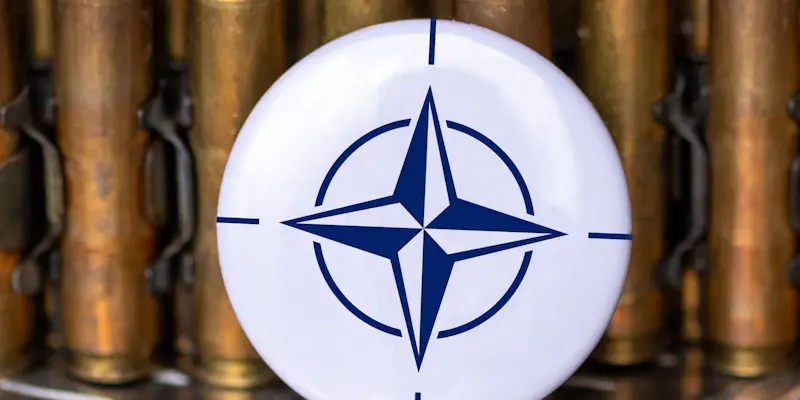NATO’s adoption of advanced digital technologies is revolutionizing its defense strategies, with smartphones emerging as a vital tool beyond their traditional role as consumer devices. These devices are now being integrated into complex military operations, providing NATO with the ability to enhance strategic capabilities significantly. Smartphones are equipped with capabilities such as encrypted communication and real-time data sharing, which are critical for coordinating military activities. This focus on leveraging the advanced functionalities of smartphones marks a paradigm shift in how NATO approaches defense operations in a rapidly evolving technological landscape.
One of the principal benefits of integrating smartphones into NATO’s operations is their ability to facilitate secure, instant communication among military personnel. This allows for the exchange of mission-critical information in real time, which is essential for making swift and informed decisions during operations. Furthermore, the advent of sophisticated mobile applications tailored to NATO’s needs means that personnel can access important data on the move. This capability not only enhances operational efficiency but also allows for more adaptive responses to emerging threats.
Investment in secure mobile applications and infrastructure has become a cornerstone of NATO’s strategy. Ensuring that these applications meet military-grade security standards is of paramount importance, especially given the increasing complexity of cyber threats. Collaboration with leading tech companies has enabled NATO to develop bespoke smartphone software that guarantees data integrity and security. These efforts underscore NATO’s commitment to maintaining the highest levels of cybersecurity while leveraging mobile technology’s benefits.
Advanced Capabilities and Real-Time Coordination
The integration of smartphones into NATO’s defense apparatus underscores their advanced capabilities, especially in terms of encrypted communication and real-time data sharing. These functions are indispensable for the coordination of complex military operations. Encrypted communication ensures that sensitive information is transmitted securely, reducing the risk of interception by adversaries. The ability to share real-time data further enhances situational awareness, allowing for more precise and coordinated actions during missions. This technological enhancement is particularly crucial in high-stakes environments where timing and accuracy are critical.
In addition to encrypted communication, smartphones equipped with specialized applications transform how military personnel interact with information. These applications provide functionalities such as mapping, reconnaissance, and intelligence gathering, all accessible from a single handheld device. The convenience and efficiency brought about by these applications enable NATO’s forces to operate more effectively in diverse terrains and situations. By streamlining information flow and minimizing the need for multiple devices, smartphones serve as all-in-one tools that significantly enhance operational capabilities.
Moreover, the role of smartphones in facilitating virtual collaboration among NATO member states cannot be overstated. In a globalized world where alliances and coalitions are paramount, the ability to communicate and share information seamlessly across geographical boundaries is invaluable. Smartphones make it possible to conduct virtual meetings, strategy sessions, and training simulations, thus fostering a more integrated and united defense posture. This interconnectivity helps bridge the physical distances among member states, ensuring that NATO remains agile and responsive in addressing threats.
Addressing Cybersecurity Challenges
As the digital transformation progresses, cybersecurity has become a non-negotiable aspect of NATO’s strategy. The reliance on smartphones for mission-critical activities necessitates the implementation of robust security measures to protect communication networks. To this end, NATO has been working closely with technology companies to develop software that meets stringent military-grade security standards. This collaboration ensures that all data transmissions are secure and that the network’s integrity is maintained, even in the face of evolving cyber threats.
The emphasis on cybersecurity extends beyond just protecting communication channels. NATO’s cybersecurity strategy encompasses safeguarding the entire technological ecosystem, including infrastructure, applications, and devices. This comprehensive approach is crucial, given that any vulnerability in the system could have far-reaching consequences. By investing in cutting-edge security solutions, NATO aims to preempt cyber threats and safeguard its critical operations. These efforts also entail regular security audits and updates to adapt to the dynamic nature of cyber risks.
Despite these advancements, the increased use of smartphones in defense scenarios raises concerns about privacy and the potential for digital surveillance. Balancing security with personal freedom is a complex challenge that NATO must navigate. While ensuring that sensitive data remains protected is fundamental, measures must also be in place to guarantee the privacy rights of individuals. Addressing this balance is vital, as any perceived overreach could have implications for trust and cooperation among member states and with the public.
Future of Military Operations
NATO’s use of advanced digital technology is transforming its defense strategies, with smartphones becoming crucial tools beyond their traditional use as consumer items. These devices are now integrated into complex military operations, giving NATO the capability to significantly boost strategic functions. Smartphones with encrypted communication and real-time data sharing are vital for coordinating military activities. This shift to using smartphones represents a major change in NATO’s defense approach in a fast-changing tech landscape.
One key advantage of using smartphones in NATO’s operations is their ability to provide secure, instant communication among military members. This enables real-time exchange of mission-critical information, essential for quick and informed decision-making during operations. Furthermore, sophisticated mobile applications tailored to NATO’s needs enable personnel to access important data while on the move, enhancing operational efficiency and allowing adaptive responses to new threats.
Investing in secure mobile apps and infrastructure is now a cornerstone of NATO’s strategy. Ensuring these apps meet military-grade security standards is crucial, especially with the increasing complexity of cyber threats. Collaborating with leading tech companies has allowed NATO to develop custom smartphone software guaranteeing data security. These steps highlight NATO’s commitment to high levels of cybersecurity while taking full advantage of mobile technology.

